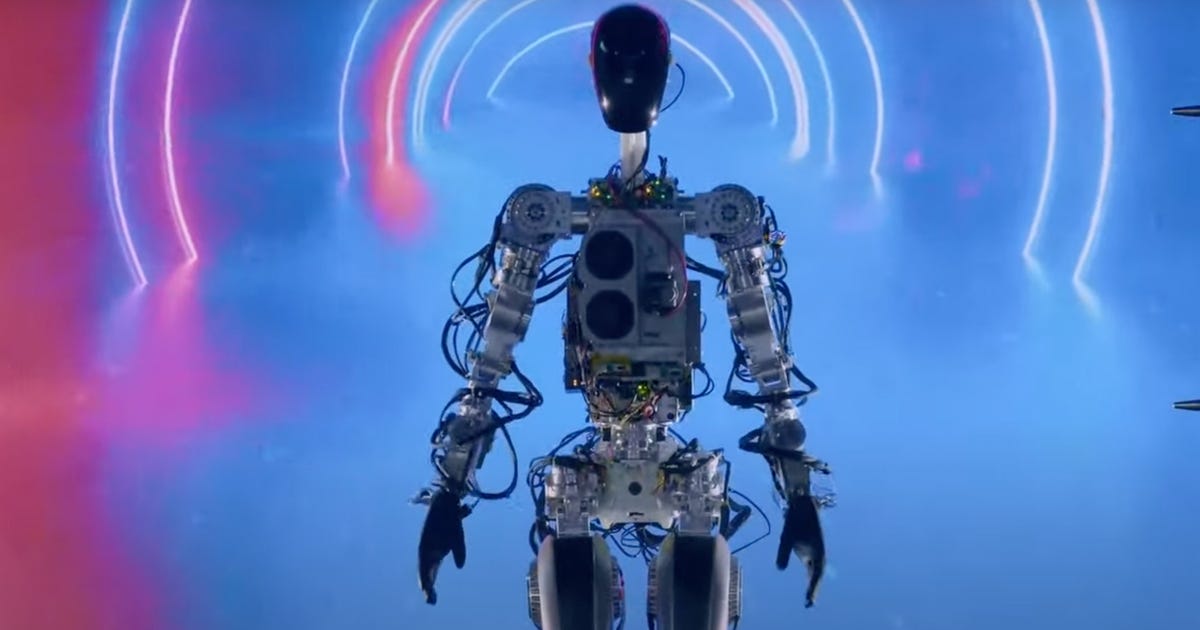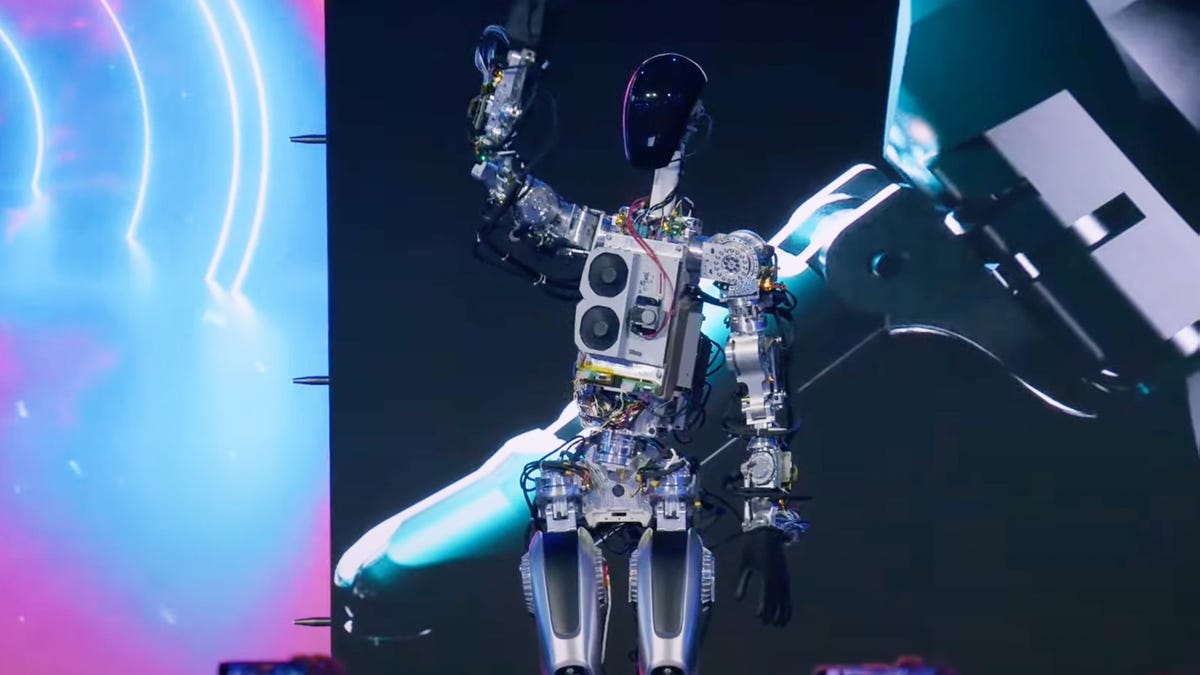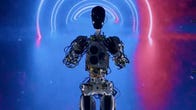
Tesla CEO Elon Musk unveiled the Tesla Bot Friday, a walking robot codenamed Optimus that waved and raised its hands in a very slow sort of dance move.
“The robot can do a lot more than what we showed you. We just didn’t want it to fall on its face,” Musk said at Tesla AI Day 2022, an event designed to showcase the robot and the company’s autonomous vehicle technology, called Full Self-Driving, or FSD.
Ultimately, Musk wants to build Tesla Bots by the millions and sell them for $20,000 apiece. He didn’t share a schedule, but said, “Our goal is to make a useful humanoid robot as quickly as possible.”
The effort, while still early, is among the most ambitious in the robotics world given how widespread and capable Tesla hopes the robots can become. But progress is hard. Rivals like Boston Dynamics have worked for years on humanoid robots but so far have produced only prototypes. More common are robots with more limited abilities, like wheeled delivery bots or Amazon’s Astro, a household camera-equipped tablet on wheels.
Artificial intelligence technology works best with narrow jobs, but Tesla’s car piloting technology and robots must reckon with immense real-world variety. But Optimus will likely lead a sheltered life to start. The company plans to use it first in Tesla’s own factories.
Two Tesla Bots on stage
Musk showed two robots. The first, walking model, was built with off-the-shelf mechanical actuators. The second, whose limbs and fingers were controlled by Tesla’s own actuators, couldn’t walk but could grip with its hands. In a video, the bots could do more, including picking up boxes and turning at the waist.
“It wasn’t quite ready to walk, but I think it’ll walk in a few weeks,” Musk said of the second Optimus robot.

The first prototype of Optimus, the code name for the Tesla Bot, waves an arm at the Tesla AI Day 2022 event.
Screenshot by Claire Reilly/CNET
The second Optimus prototype weighs 161 pounds (73 kg). It uses a variation of the same computing hardware that powers Tesla’s autonomous vehicle technology, called FSD. Its battery pack has a capacity of 2.3 kilowatt hours, “perfect for a full day’s work,” one engineer said. It consumes about 100 watts of power sitting and 500 watts when walking briskly. That’s something like a high-end gaming PC.
The first robot walked at a slow, shuffling pace, with one foot placed just in front of the other. Its bent knees gave it a somewhat mincing gait. It was able to turn and flex at the waist. Its body was studded with mostly green LEDs, and its chest featured a large computer with dual spinning fans to cool the processors.
Tesla engineers emphasized the degrees of freedom in the Optimus robots — essentially the different ways it could bend or twist at different joints. The full robot body has more than 200 degrees of freedom, 27 of them in the hands alone, Tesla said.
Tesla uses the same AI software to control the Tesla Bot as it uses in its cars. Some of the same technology applies, like gauging “occupancy” of nearby areas. It’s just trained with real-world environments instead of driving video, Tesla said.
Musk didn’t hold back on the sci-fi promises for its robots. With robots at work, economics enters a new age, a “future of abundance, a future where there is no poverty, a future where you can have whatever you want in terms of products and services,” Musk said. “It really is a fundamental transformation of civilization as we know it.”

